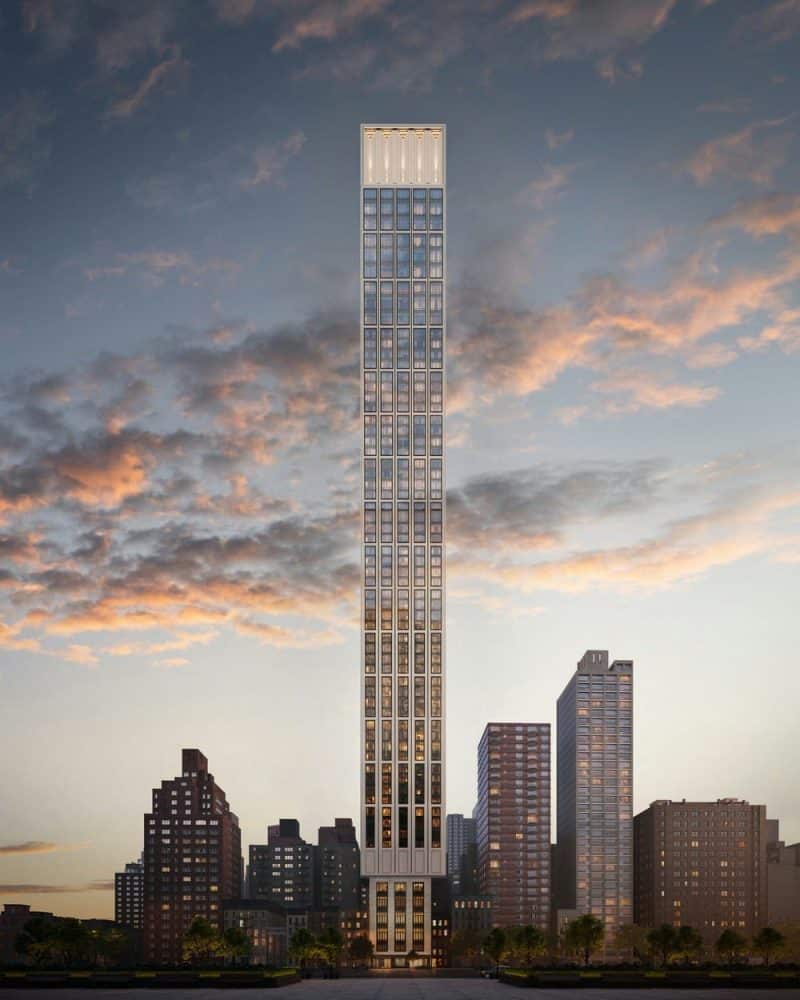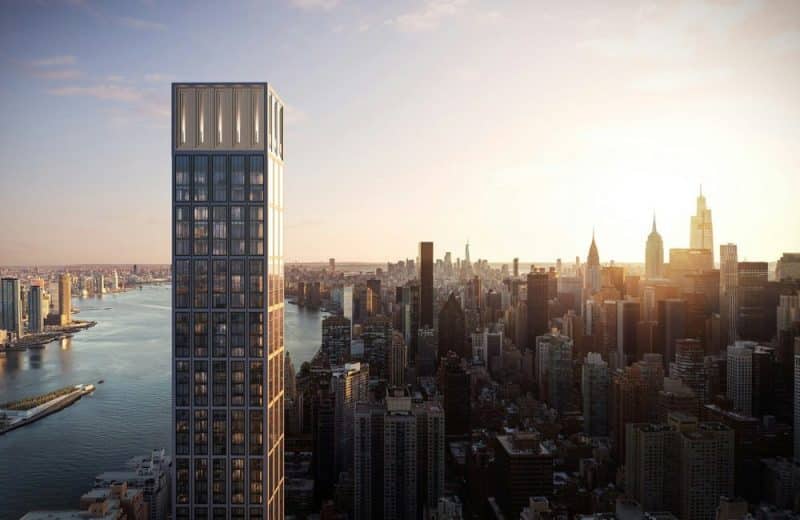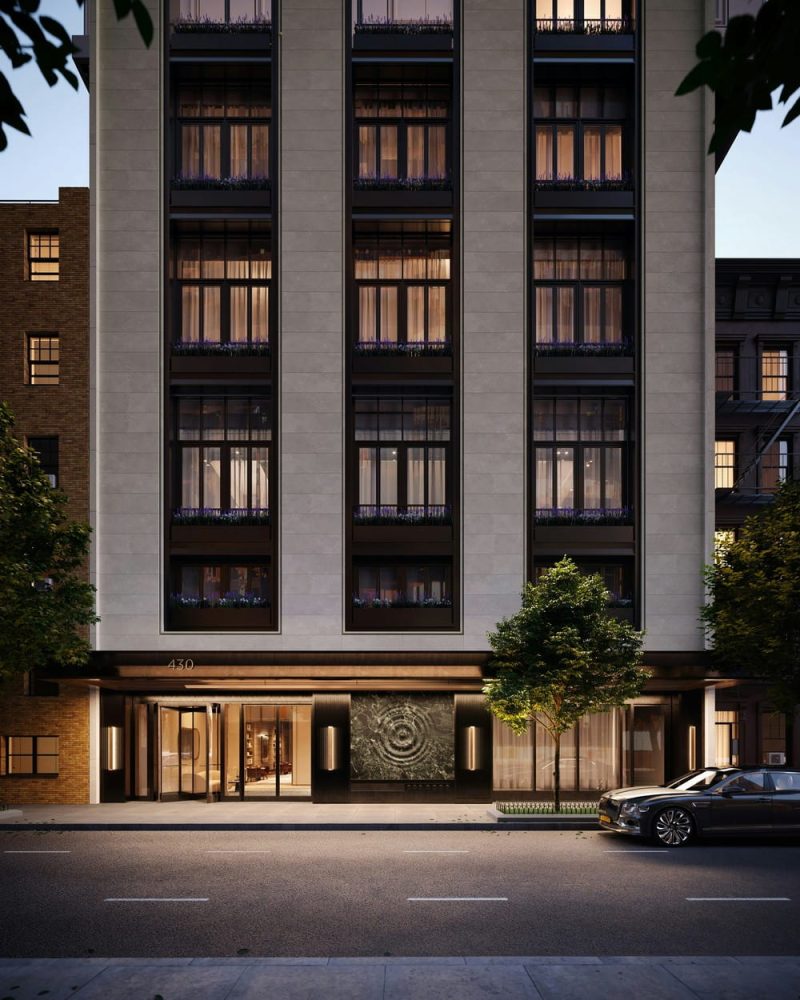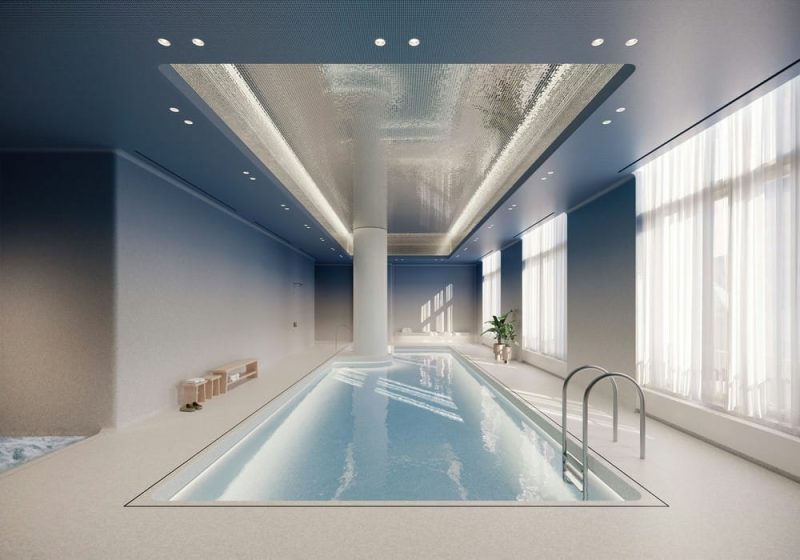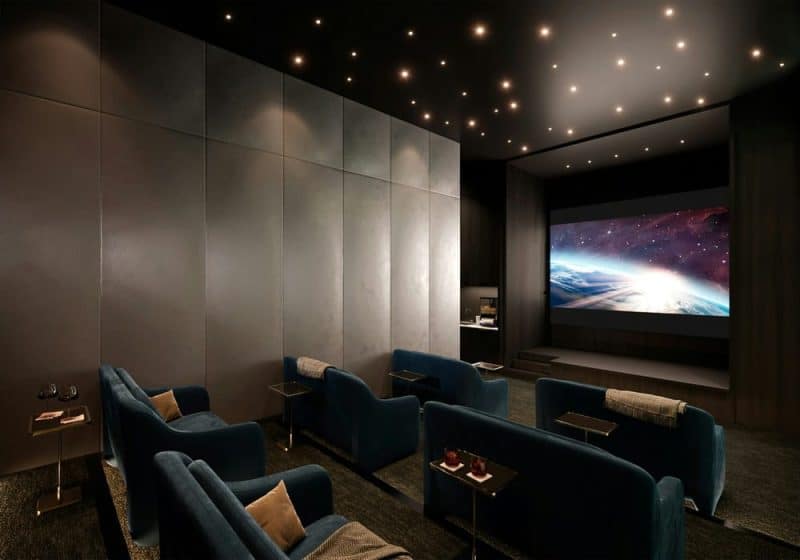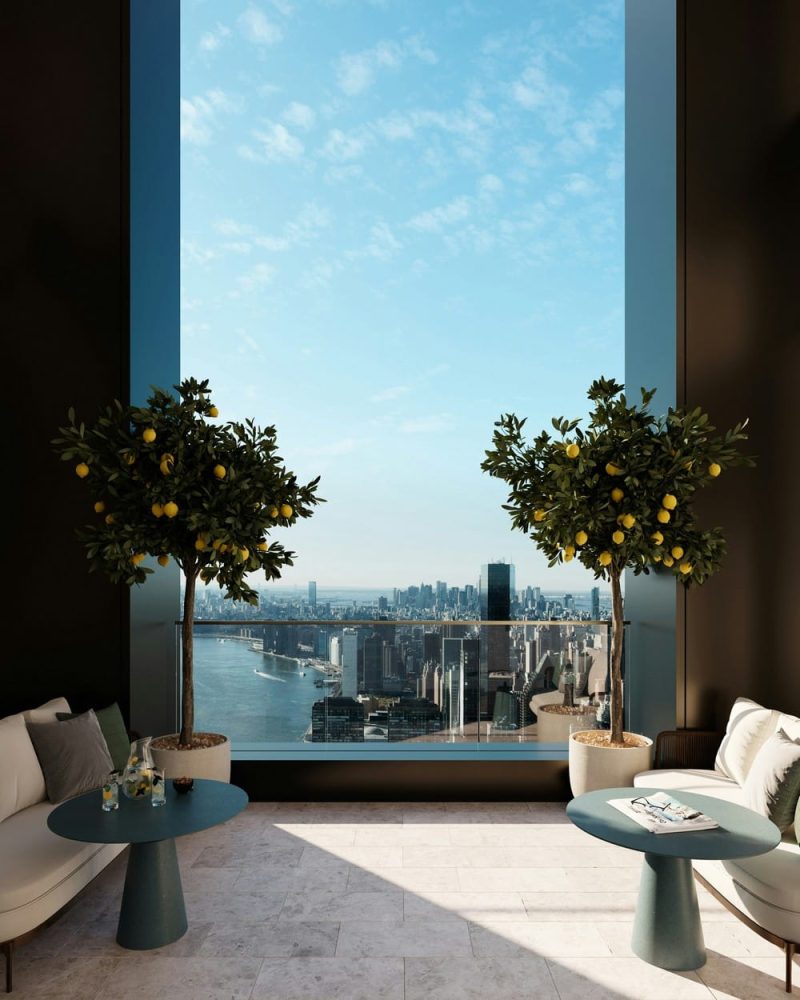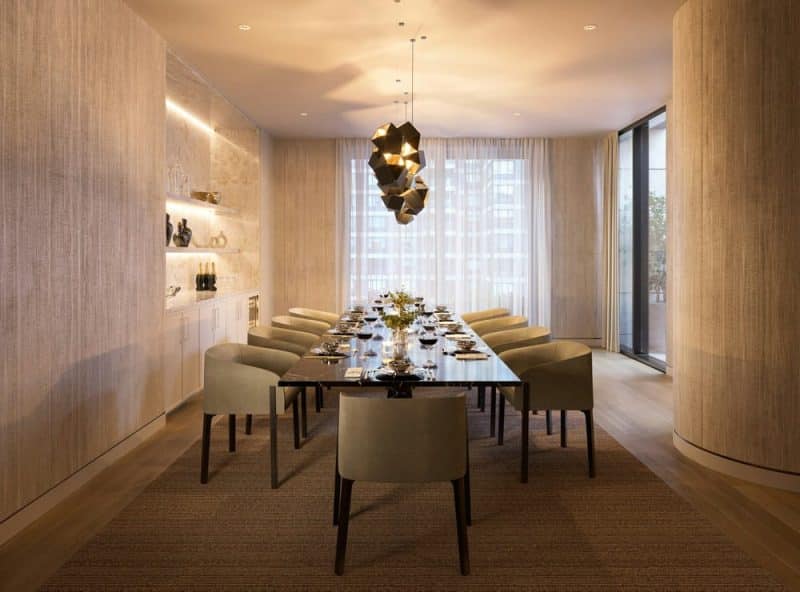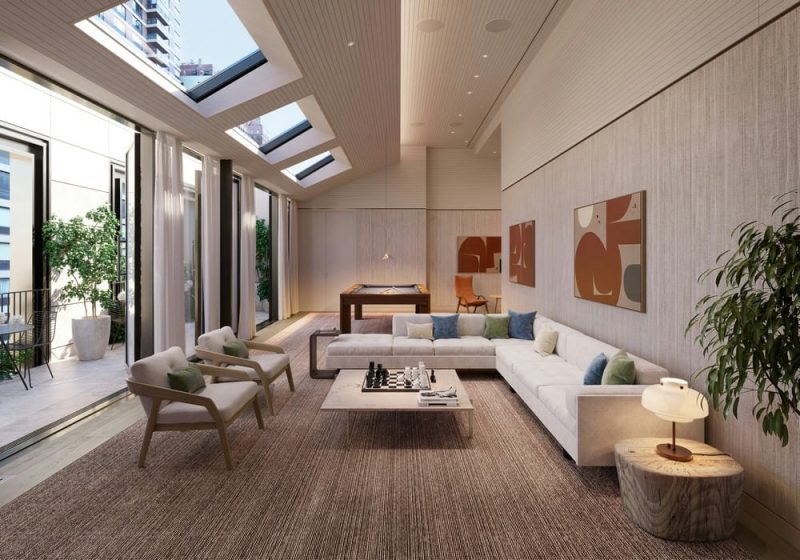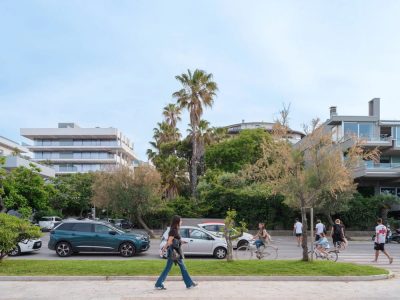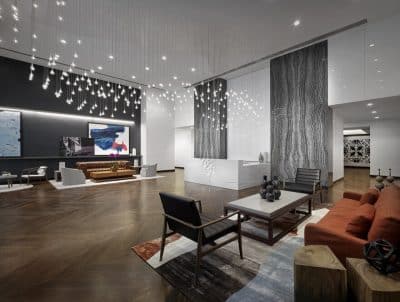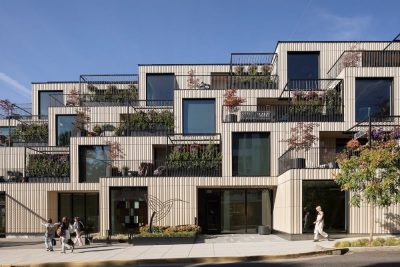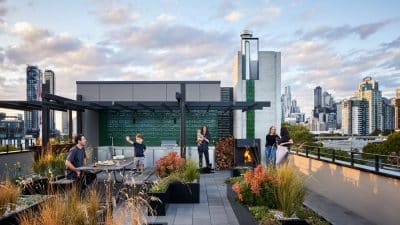
Project: Sutton Tower
Architecture: Recent Spaces
Architect: Thomas Juul-Hansen, Steven B. Jacobs Group
Location: New York City, New York, United States
Year: 2022
Photo Credits: Recent Spaces
Sutton Tower rises proudly along Manhattan’s East River edge, bringing a new level of elegance to the city’s iconic architectural landscape. Designed by acclaimed architect Thomas Juul-Hansen, the tower features a refined limestone structure topped with a luminous crown—celebrating the timeless spirit of the New York skyline. Residents enjoy sweeping views that stretch from the East River to the Atlantic Ocean, creating a rare blend of visual drama and sophisticated urban comfort.
A Neighborhood Steeped in History
Sutton Place, home to the tower, has long held a reputation as one of New York’s most charming and understated neighborhoods. Locals began calling it “Little London” in the 1920s, thanks to its riverside setting, elegant architecture, and intimate pocket parks. The area offers the warmth of a close-knit village with the prestige of a Manhattan address, making it an ideal setting for this architectural statement.
Turning Vision Into Reality
To communicate Sutton Tower’s full potential before construction ended, the creative team at Recent Spaces developed a series of striking, photo-realistic renderings and animations. They began by carefully visualizing each composition in 3D, then collaborated with drone pilots to capture atmospheric cityscapes at carefully chosen angles. The team skillfully integrated the real and the rendered, crafting visuals that feel both cinematic and grounded in reality.
Rather than rely on typical lighting, Recent Spaces selected rare and evocative times of day—twilight, early dawn, and golden hour. These moments revealed subtle details in the limestone façade and allowed the tower to shine against the city’s backdrop. Their lighting choices added emotional depth and helped distinguish Sutton Tower from neighboring buildings.
On a recent tour, the team saw just how closely the finished building matched their visualizations. Their renderings didn’t just predict the final result—they captured its soul. This alignment reflects both the precision of the design process and the artistry that defined the project from start to finish.
